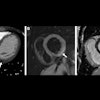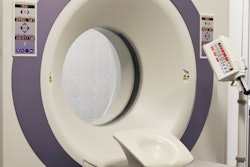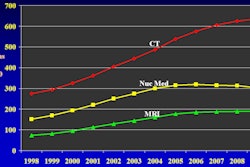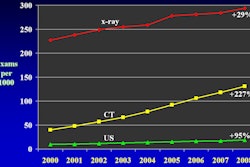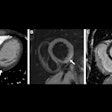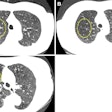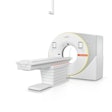Emergency department (ED) physicians vary widely in their ordering patterns for head CT scans of patients, according to a study in the American Journal of Medicine. Ordering rates varied by as much as 300% for patients who presented with atraumatic headache, even between ED physicians in the same institution.
A research team led by Dr. Luciano Prevedello, a fellow at the Center for Evidence-Based Imaging at Brigham and Women's Hospital, conducted a study of variation in head CT exam ordering by emergency physicians. The researchers' primary objective was to quantify the extent of variation among individual emergency physicians, including a subanalysis of ordering brain CT exams for patients with atraumatic headaches. They also wanted to determine if any variation remained after controlling for factors believed to be associated with differences in ordering head CT exams (Am J Med, February 10, 2012).
The researchers identified 55,281 patient visits to the hospital's emergency department in 2009. Of these, head CT exams were ordered for 4,919 patients, or 8.9% of the total patient population. The researchers determined that the rate of ordering head CT exams ranged from 4.4% to 16.9%. After controlling for pertinent variables, a twofold variation existed, with a range of 6.5% to 13.5%.
There was a threefold variation in the number of CT scans ordered by emergency physicians to diagnose patients with atraumatic headaches. After adjusting for factors such as patient mix and degree of trauma, head CT ordering rates for patients presenting with atraumatic headaches ranged from 21.2% to 60.1%.
No correlation in head CT ordering frequency could be established based on physician age, gender, or experience. Time of day and the location within the hospital where the patients received emergency treatment also were unrelated.
Brigham and Women's Hospital makes extensive use of clinical decision-support software integrated with a computerized physician order-entry (CPOE) system. In 2009, almost all emergency diagnostic imaging exams were ordered through this integrated system. However, the scope of the current study did not include assessing specific interactions with the clinical decision-support/CPOE system by individual ordering physicians. The authors recommended that interaction be analyzed in a future study.
The study confirms earlier peer-review published findings of wide variation in imaging use, the authors concluded. They attributed the variation to issues such as physician knowledge gaps and practice style variations. Further research should focus on whether "evidence-based knowledge delivery systems" at the time imaging exams are ordered could reduce variability, they recommended.
